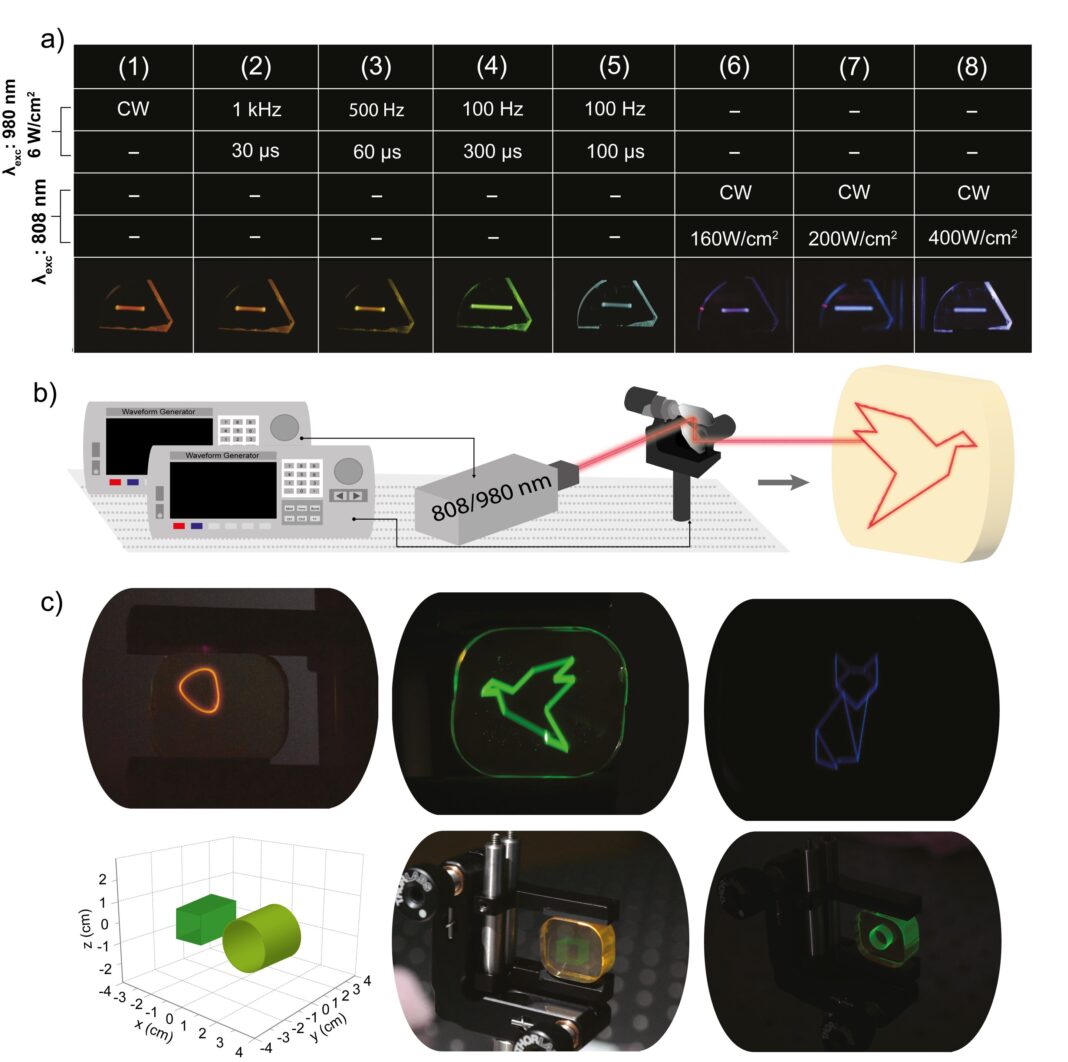by Light Publishing Center, Changchun Institute of Optics, Fine Mechanics And Physics, CAS
The limitations of two-dimensional (2D) displays in representing the depth of the three-dimensional (3D) world have prompted researchers to explore alternatives that offer a more immersive experience. Volumetric displays (VDs), which generate 3D images using volumetric pixels (voxels), represent a breakthrough in this pursuit.
Unlike virtual reality or stereoscopic displays, VDs deliver a natural visual experience without requiring head-mounted devices or complex visual tricks. Among these, laser-based VDs stand out for their vivid colors, high contrast ratios, and wide color gamut. However, the commercial viability of such systems has been hindered by challenges such as low resolution, ghost voxels, and the absence of tunable, full-color emission in a single material.
To address these limitations, researchers from Yildiz Technical University, led by Miray Çelikbilek Ersundu, and Ali Erçin Ersundu, have developed innovative RE3+-doped monolithic glasses (RE = Ho, Tm, Nd, Yb) capable of tunable full-color emission under near-infrared (NIR) laser excitation.
Their work, recently published in Light: Science & Applications, demonstrates the potential of these glasses as materials for dynamic, full-color laser-based VDs, overcoming key obstacles faced by existing technologies.
The team’s approach leverages the unique optical properties of rare-earth ions in glass matrices, which provide several advantages over crystalline materials. These glasses exhibit high optical transmittance, thermal and chemical stability, low phonon energy, and superior mechanical strength.
Additionally, their ease of large-scale production and high rare-earth solubility make them ideal candidates for practical applications. By optimizing the glass composition and excitation parameters, the researchers achieved tunable red, green, and blue (RGB) emission from a single material using 808 nm and 980 nm laser excitation.
The team demonstrated the practical application of their materials by constructing a prototype VD system. Using the RE3+-doped monolithic glasses, they generated dynamic 3D images with precise control over voxel position and color. The system’s ability to achieve high spatial resolution, dynamic imagery, and full-color tunability highlights its potential for use in medicine, education, engineering, and entertainment.
“The developed glasses represent a remarkable step forward in the advancement of laser-based volumetric displays, offering a unique combination of functionality, scalability, and ease of fabrication,” the researchers noted.
“By overcoming the limitations of previous approaches, this breakthrough lays the groundwork for innovative 3D visualization technologies. With their exceptional versatility and efficiency, these specially designed glasses have the potential to revolutionize next-generation display systems and redefine how we interact with visual information.”
“These glasses can also be utilized for a range of purposes in real-world applications,” the team added. “They offer the ability to perform in-situ high-resolution 3D imaging, rapidly adjust the color and resolution of voxel images in real-time, and dynamically control the spatial arrangement of these images without the need for complex systems.
“Given the tunability and scalability of the materials, their use can extend beyond traditional displays into fields such as medical imaging, educational tools, and interactive entertainment, where both vivid color and precision are essential.”
More information:
Utku Ekim et al, Full-color dynamic volumetric displays with tunable upconversion emission from RE3+-doped glasses (RE = Ho, Tm, Nd, Yb) under NIR laser excitation, Light: Science & Applications (2025). DOI: 10.1038/s41377-024-01672-2
Provided by
Light Publishing Center, Changchun Institute of Optics, Fine Mechanics And Physics, CAS
Citation:
Dynamic 3D displays: Rare-earth glasses offer vivid, tunable colors (2025, February 19)
retrieved 19 February 2025
from https://phys.org/news/2025-02-dynamic-3d-displays-rare-earth.html
This document is subject to copyright. Apart from any fair dealing for the purpose of private study or research, no
part may be reproduced without the written permission. The content is provided for information purposes only.





